By Elizabeth GodsmarkAtlantic Publishing
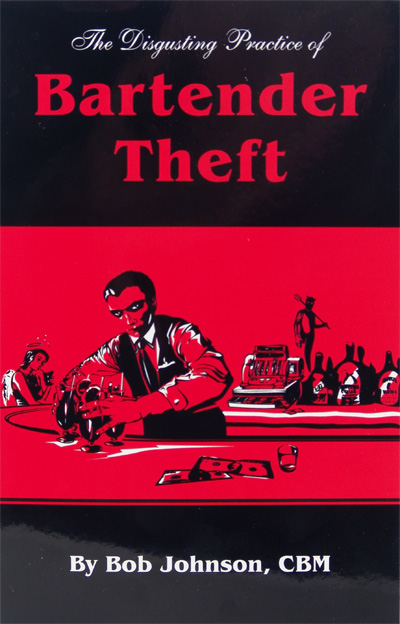 This is an alarming fact: most types of beverage operations lose a crippling percentage of profits through insider theft. The vast majority of employees in the beverage industry are honest and hardworking; it is the small minority of staff that can ruin your business through dishonesty. Insider theft can often escalate if there are weaknesses in the following general areas of the operation:
This is an alarming fact: most types of beverage operations lose a crippling percentage of profits through insider theft. The vast majority of employees in the beverage industry are honest and hardworking; it is the small minority of staff that can ruin your business through dishonesty. Insider theft can often escalate if there are weaknesses in the following general areas of the operation:
- Lack of supervision. Theft from behind the bar, storeroom or storage areas is a major problem. Curb losses by increasing supervision, either in person or by means of strategically positioned security cameras.
- Proprietor attitude. Don't make matters worse by treating all employees with suspicion. Get the honest staff on your side.
- Weak management. Unfortunately, some beverage managers compound the issue of insider theft by turning a "blind eye" and simply increasing prices to cover "shrinkage." Owners need to question unwarranted price rises.
- Pouring costs A common danger area. These costs need to be carefully monitored, especially in relation to bartender productivity.
- Inventory records. This is one of the easiest areas for dishonest employees to "fiddle the books." Tighten up your record keeping. Never leave inventory control to one person. Double-check.
- End-of-shift cash count. Another prime target area for insider theft. Never let a bartender reconcile the cash in the register at the end of his or her shift.
Bartender Theft: Top Ten Ploys
Controlling theft behind the majority of bars is no mean task; eliminating it altogether is virtually impossible. Temptation is a fine thing, and unfortunately, the opportunity for bartender theft is overwhelming. However, in the interests of long-term survival, you have no choice but to tackle the problem head on. Be wary of the following top-ten common ploys:
- Open theft. A bartender pours a drink, doesn't ring the cash register and puts the cash in a "holding" place, such as the tip jar.
- Overcharging. Bartender pockets the difference. A variation is to charge regular prices but ring up "Happy Hour" prices and, again, pocket the difference.
- Ringing "00" on the cash register. The bartender simply steals the value of the drink.
- Overpouring. Bartender hopes to get a heavy tip.
- Underpouring. Bartender keeps a mental note of the number of half measures poured throughout the evening and then thieves the equivalent value in drinks, gives them away or drinks them him-or herself.
- Rounds of drinks. Bartender rings up for a "round" rather than separate items. It makes it easier to inflate the overall price of a round of drinks, particularly if guests are unfamiliar with individual prices.
- Shortchanging. Common variations include: counting aloud while handing the customer less money, distracting the customer by sliding the change along the bar, and giving change for lower -denomination bills (while keeping the difference).
- "Soft" inventory. Bartender neglects to charge for the mixer component of a drink.
- Substitution - bringing in own liquor. This is often done with vodka because it is odorless and looks like water. Dilution is another similar ploy.
- Padding the tab. The bartender pencils in an inflated total and later erases it, replacing it with the correct total. Warning! Ban pencils from behind the bar.
Less Common (But Equally Damaging) Employee Theft
The more experienced the dishonest employee, the better equipped he or she is to manipulate the system. Thieving members of staff are quick to detect exactly how much an owner really understands about the business. In the beverage industry, take nothing for granted. Alert yourself to the following, somewhat extreme, possibilities.
- Reusing closed tabs. The bartender appears to ring up the drink price but, in actual fact, only halfway enters the tab into the register. He or she then hits "0" to give the impression of ringing it in.
- Over-ringing. When the customer isn't looking, the thief over-rings an amount on the tab and then re-rings the tab for less than the amount charged.
- "Paid outs." The bartender claims that the money was refunded for various reasons, such as faulty cigarette machines.
- Jigger substitution. The bartender brings in his own shot glass that looks identical to the official jigger but is actually smaller. Several short measures over a shift add up
- Changing shifts. It is easy for the thief to make, serve and collect several drinks during a busy "hand-over" period.
- Deliberate mistakes. Drinks are then returned and resold or given to a friend.
- Breaking empty bottles and pretending they were full. Full bottles are then requisitioned to replace the "broken" empty bottles.
- Substituting water in the drip tray. The bartender pretends he or she had to waste a pint to clear the lines and then pockets the difference.
This article is an excerpt from the Food Service Professional Guide to Controlling Liquor Wine & Beverage Costs, authored by Elizabeth Godsmark, published by Atlantic Publishing Company. This excerpt has been reprinted with permission of the publisher. To purchase this book go to:
Atlantic Publishing Company
Amazon.com
Topics:
bar inventory levels,
bar business,
Bar Management,
Reducing Costs,
bar control,
Control
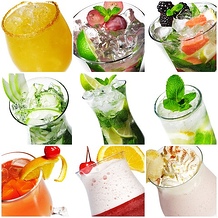 By Elizabeth GodsmarkAtlantic Publishing DRINK MIXESJust because mixes aren't a drink's main ingredients, one shouldn't ignore their impact upon your operation's profitability. There is considerable scope for trimming costs in this area. Despite being sold in small portions, drink mixes have a high overall sales volume; it is also predictable and consistent. Review the range of drink mixes used in your establishment. It all helps to reduce costs.
By Elizabeth GodsmarkAtlantic Publishing DRINK MIXESJust because mixes aren't a drink's main ingredients, one shouldn't ignore their impact upon your operation's profitability. There is considerable scope for trimming costs in this area. Despite being sold in small portions, drink mixes have a high overall sales volume; it is also predictable and consistent. Review the range of drink mixes used in your establishment. It all helps to reduce costs.
-
Fresh orange juice. It is worth investing in a good commercial juicer for orange juice. A handy tip is to rinse oranges under hot water before placing them in the juicer - the juice yield will be higher.
-
From scratch drink mixes. Preparing a whole range of drink mixes from scratch is too time-consuming, and all too often, results in inconsistent quality. You're better off buying ready-made mixes. Test samples of mixes before making a decision. Prepared mixes can vary considerably in taste and quality.
-
Cut garnish costs. Your choice of garnishes to accompany drink mixes can, quite literally, eat into your profits. Bartenders are notorious for nibbling olives, cherries, pineapple wedges, chocolate shavings, peppermint sticks, pretzels, etc. Remove temptation. Store garnishes in airtight containers in a cooler, away from temptation. Also, establish par levels for fruit garnishes and only prepare enough for one shift.
-
Unusual juices. Use single-portion 6-ounce cans for less-frequently-served juices. Trade higher cost for reduced wastage, time saving and convenience.
BOOST PROFITS BY CHOOSING THE RIGHT DRINK RECIPES
The recipes you choose to feature on your drinks menu must do more than satisfy customer requirements. Plan carefully; a lot of thought needs to go also into keeping costs down, while at the same time maintaining a fine reputation for quality and imagination. This is no mean task, but the following simple suggestions may help:
-
Communicate your recipe preparation techniques. Add a brief description about your unique preparation techniques underneath each recipe on the drinks menu. Tempt your customers to try "something different." The secret lies in your method of communication, rather than in the actual recipes themselves.
- Highballs. Although highballs can be served in a variety of different-sized glasses, the ideal size for maximum efficiency and controlling costs is a 9-ounce glass. It accommodates the exact proportions for a standard highball recipe. The glass looks full to capacity; the customer is happy. Also, you know that the portions of ingredients are correct.
- Recipes on napkins. Dare to be different. Get some recipes you want to promote printed on napkins. It's different, and it's a good marketing tool. It also channels customers into ordering the recipes that you want them to buy. Choose the "special" recipes on the basis of higher profit margins, but promote them as "added value" recipes.
- Mobile mini-bar. As well as serving recipe drinks from the main bar, introduce a mini-bar on wheels. Get a bartender to wheel it around, selling "taster recipes" at promotional prices. The spontaneity of this approach is excellent for generating extra income.
This article is an excerpt from the Food Service Professional Guide to Controlling Liquor Wine & Beverage Costs, authored by Elizabeth Godsmark, published by Atlantic Publishing Company. This excerpt has been reprinted with permission of the publisher. To purchase this book go to:
Atlantic Publishing Company
Amazon.com
Topics:
Bar Management,
drink recipe,
Drink Recipes
By Chris ParryAtlantic Publishing
Vending Machines Pay!
Your kitchen can't stay open all night long and when it closes, it will do you well to have a means for your customers to fill a hole in their stomachs. A vending machine will not only do just that, it can also supply everything from condoms to cologne, antacids to breath mints. In fact, if there's a need for it, you can bet there's a vending machine to fill that need. Check your local yellow pages for vending suppliers near you.
- Respond to customer requirements. People go to bars for three reasons: to drink, have fun and meet people. That last reason might make you want to consider fitting your club with a condom machine. One of these machines in the women's and men's restrooms can bring you a great source of income, especially on busy nights. Offering other bathroom essentials, like cologne, lip balm, women's essentials and aspirin, can add further profitability to your operation.
- Snacks.A selection of snack products can be another great earner, not just inside your bar but also outside. Chocolates, candy, chips, mints, cookies, granola bars; these snacks will keep your patrons going all night long without bothering your bar staff - or tempting them to enjoy the snacks themselves. Also, if you have some machines positioned outside your venue, they will continue selling for you even when the bar is closed!
- Water. In a nightclub, charging for glasses of water can be seen as profiteering by your customers. However, installing a bottled-water- vending machine can not only save your bartenders the time spent pouring out free water, it can also bring you in a hefty profit when patrons start to work up a sweat on the dance floor. Initiate a "bottled water only" rule when the dance floor is in operation and have your bartenders point to the vending machine whenever they're asked for water. Or have a selection of bottled waters available from the bar. You might even consider a special menu just for bottled waters. Your customers won't mind paying for it so much if they're getting the bottled product.
- Pay phones. It seems everyone these days has a cell phone, but there's still a huge need for the good old payphone. Incorporating phone card vending machines alongside a bank of pay phones is a way to double your profits on your customers' phone habits. Have them give you quarters for local calls or ten bucks for long distance. If you give your patrons options, they'll invariably choose one.
This article is an excerpt from the Food Service Professional Guide to Bar & Beverage Operation, authored by Chris Parry, published by Atlantic Publishing Company. This excerpt has been reprinted with permission of the publisher. To purchase this book go to:
Atlantic Publishing Company
Amazon.com
Topics:
bar,
NightClub Management,
bar business,
Bar Management,
Bar products,
Increasing Profits
By Chris ParryAtlantic Publishing
Getting the Most From Your Patrons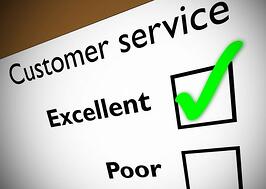
The patron walks in with $20. When the well is dry, he or she will go home (or possibly procure more) but how do you make sure you get as much of that $20 as possible? Consider the following:
- Value-add! It might cost you a buck to make a bourbon and coke and it might cost you two bucks to make a burger. Why not offer your drinkers a cut-price deal on that burger during a certain time of the night: buy two drinks, get a free burger to go with it. You're not making any money on that burger, but you are ensuring that the customer will stay in your bar while they eat it - and probably a little longer. Heck, they might even order a side of deep-fried mushrooms to go along with it.
- Make it easier to stay than go. If your staff is asking people, "Should I get you the bill?" instead of, "How about a round of coffees?" you're only giving your customers an excuse to hit the road.
- Keep the TV interesting. A big error many establishments make is that they leave a TV on but don't pay any attention to what's on it. Keep an eye on your screens and keep an even bigger eye on the TV Guide, to make sure that, if at all possible, you're giving your patrons a reason to stay: "Ooh, ER is on! Maybe I'll have another...
- Read the crowd. On any given night, your entire customer base can change radically. If you look around and find that there are a lot of young people in the place, adapt to suit that audience. Run a one-off special on tequila shots or shooters or turn on the dance-floor lights. Likewise, if a sports crowd comes in unexpectedly, get them into the swing of things by adapting to suit their needs.
- Give valued employees the power to make executive decisions. There's nothing worse, as a customer, than being told, "I don't know, the manager isn't here until later tonight..." Make sure you always have people on staff who can handle a situation and even veer away from the way things normally run, if common sense dictates it. Trust your people to make the right move.
- Cut down on your "no" answers. You might stock Diet Coke, but what about Diet 7-Up? What about veggie burgers? What about fresh-squeezed orange juice? There might not be a whole lot of demand for these products, but if you don't have them when they're asked for, you're giving your customers an excuse not to return, even if they don't make a big deal about it at the time. Don't sink money into something that won't sell, but don't go the other way and reduce what you can sell.
- Merchandise sells! A funky logo doesn't just make your venue more appealing; it sells, too. Research shows that the McDonald's logo is more recognizable to children than the cross symbol of Christianity; so it stands to reason that you could profit nicely from a logo that is "cool" enough for people to wear. T-shirts, golf shirts, baseball caps, key chains, lighters and souvenir glasses - take a tip from the Hard Rock Cafe: if sold well, merchandise can be a bigger earner than alcohol.
This article is an excerpt from the Food Service Professional Guide to Bar & Beverage Operation, authored by Chris Parry, published by Atlantic Publishing Company. This excerpt has been reprinted with permission of the publisher. To purchase this book go to:
Atlantic Publishing Company
Amazon.com
Topics:
Bar staff,
NightClub Management,
bar business,
profit,
Bar Management,
Increasing Profits
By Chris ParryAtlantic Publishing
Upsizing is Essential
When you go to the movies, quite often you can buy a double-sized popcorn for only $0.75 more than the $3.50 regular size. This would seem to be an astonishing bonus for the customer, so why does the cinema operator push this "up-sizing" so hard? Quite simply, because they're selling about $0.04 worth of popcorn for that extra $0.75. That second portion might not bring as large a profit margin as the first, but it's still profit. Your drinks run the same way - if you can get another buck out of a customer selling a drink that costs you $0.45 to prepare, it's worth doing.
-
Consider the cost per ounce of your well spirits. Let's assume you're using El Cheapo brand tequila at a base cost of $7.54 a liter. That would mean that an ounce of that spirit is costing your establishment $0.22, while a more-expensive brand of tequila, let's say Cuervo for the sake of this example, might come at a base cost of $14 per liter, or $0.41 per shot. Common thinking might lead you to say that by using the cheaper tequila you're saving yourself $0.19 on every drink sold. But, if you consider the alternative of up-selling the more expensive spirit for an extra $0.80 or so, you're actually making an extra $0.61 profit on every up-sized drink.
-
Offer your customers a discount to spend more than they planned. This works in other areas, too. Turning a single into a double for an additional dollar, or selling half-price burgers with every shot of a specific brand of spirit, brings you more money per order, while bringing your customers added value. Your profit margin might not be as high, but you'll be extracting more money from your customers than they might otherwise have spent - a definite win-win.
-
Up-selling. Most bar customers will bring out more money than they initially want to spend -just in case - especially those that don't have easy access to it through ATM machines and credit cards, so it's imperative that your staff don't let those customers walk out the door having spent less than they planned. Incentives for up-selling are commonplace in the theater and fast-food industries, so why not offer your staff an incentive to up-sell and watch your better staff earn a few extra dollars while earning you hundreds?
-
Incentives. For example, if a member of your staff engages someone in conversation and discovers they're looking for somewhere to hold a private function, birthday party, girls' night out - any large gathering of people - there's certainly no harm in making it worth their while to bring that prospective client to you. Twenty dollars here, $50 there - even a percentage of the bar take - if you offer the incentives, you'll be surprised how far people will go to bring you new business.
This article is an excerpt from the Food Service Professional Guide to Bar & Beverage Operation, authored by Chris Parry, published by Atlantic Publishing Company. This excerpt has been reprinted with permission of the publisher. To purchase this book go to:
Atlantic Publishing Company
Amazon.com
Topics:
NightClub Management,
bar business,
Bar drinks,
Bar Management,
Liquor cost,
alcohol cost
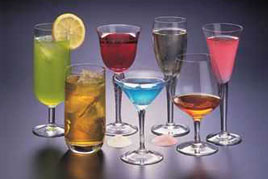 By Chris ParryAtlantic Publishing
By Chris ParryAtlantic Publishing
Structuring a Price List
Guesswork just won't do in today's corporate world. Figuring that if your scotch costs you $14 a bottle you can sell a shot for $3, is just a little hit-and-miss when you take in all the other potential costs, like rent, insurance and wages, that your establishment has to cover over the course of a month. It's possible you might be able to charge less than $3, but it's also possible you should be charging way more. Take these factors into account when making your next price list adjustment:
- Market positioning. Take a look around at what your competitors are charging. Figure out if you need to undercut them or match their level. Does your establishment give added value enough to increase your prices and still draw a good crowd? Are you a level above them in terms of services and product? Are you evenly matched? Are you looking for a more "low rent" crowd? Price accordingly.
- The competition. They're not always right, but if they've been around a while, your direct competitors probably have a good gauge of what your local customers are prepared to pay for a drink. Take the time to look around and take particular note of any specials they offer on certain nights.
- Customer demographics. Are your patrons blue-collar workers? Are they white-collar? Do they have families to get home to or are they likely to stay all night and spend every penny? Are they young adults or senior citizens? These all impact what you can charge without losing clientele, and you should have the information already from your market research.
- Embrace simplicity. It's far better for your customers and staff to have to deal with a simple pricing structure as opposed to forcing them to break their brains over an intricate maze of differently priced products. Set across- the-board levels of prices; for example, well spirits might cost $3, middle-shelf $3.50 and top-shelf $4. Of course there's always going to be the occasional variation, but for the most part, a three-tiered system gives you flexibility in pricing without your staff continually needing to check a price list or hand out handfuls of change.
- Include tax in your pricing. There's nothing worse than getting $0.84 change from a five- dollar bill on every drink you buy and getting home with a pocket full of silver and copper. If you're going to set your prices at a round level, include the tax in that price so you can use price levels to your advantage. If your alcohol tax rate is 10 percent, the non-tax price for a shot that costs your patrons $3.50 would be $3.18 ($3.18 plus tax of $0.32 equals $3.49). Let your accountant do the math, not your bar staff. Sales tax is a complicated matter that varies dramatically from state to state. Prior to establishing the net price inclusive of tax, discuss the issue with your accountant and state Department of Revenue. Don't find out later in a five-year audit that you've been calculating the tax incorrectly.
This article is an excerpt from the Food Service Professional Guide to Bar & Beverage Operation, authored by Chris Parry, published by Atlantic Publishing Company. This excerpt has been reprinted with permission of the publisher. To purchase this book go to:
Atlantic Publishing Company
Amazon.com
Topics:
bar business,
Bar drinks,
Bar Management,
Liquor cost,
alcohol cost,
drink recipe
By Chris ParryAtlantic Publishing
Part 2 of 2: Protecting Your Profits
Your profit margin, like that of any business, is fragile at best. You can sit down with a calculator and try to calculate the exact percentage you'd like to see on each drink. But in practice, a little splash too much here and there can see you falling perilously close to a loss. Follow these rules and you'll be that much more likely to see your bottom line behind the bar match that of your balance sheet estimations.
- Watch what your staff pours. Regularly measure what they consider an ounce. If just one bartender overpours 40 shots a night by 25 percent, you've given away ten drinks for nothing. This kind of waste can get very expensive, especially if you have a large bar staff and they're all pouring more than 40 drinks per night.
- Have your staff keep all the liquor in the glass. Many staff members get lazy as the night wears on, and inevitably they'll start taking shortcuts. One shortcut many take is to line up three or four glasses and pour one after the other in a straight line without raising the head of the bottle. While this may save them a second or two, it also pours a lot of your product directly onto the bar surface, not to mention down the sides of the glasses that your customers are about to put in their hands. It also means your customers are far less likely to get what they've paid for. Don't let it happen.
- There are alternatives to free-pouring. While free-pouring certainly is more stylish and perhaps faster than measured pouring, it is also definitely far from accurate. As bar staff generally tend to err on the side of caution, they usually pour too much rather than too little. Control-pour spouts, such as Posi-Pour spouts, are a little more expensive than the usual free-pour, but they give a far more accurate pour without the need for clunky overhead systems or sophisticated electronics - and at much the same speed as free-pourers.
- Liquor control system. If you really want to keep an eye on your outgoings, a liquor inventory control system may be your answer. The price of setting these systems up, and maintaining them, can be significant. Then again, you get what you pay for.
This article is an excerpt from the Food Service Professional Guide to Bar & Beverage Operation, authored by Chris Parry, published by Atlantic Publishing Company. This excerpt has been reprinted with permission of the publisher. To purchase this book go to:
Atlantic Publishing Company
Amazon.com
Topics:
Bar inventory,
managing liquor inventory cost,
bar business,
profit,
Bar Management,
alcohol cost,
bar control,
controling costs
By Chris ParryAtlantic Publishing
Part 2: Do Bartenders Create Regulars?
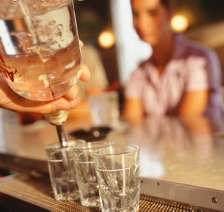 A bar business is not, as many people think, a service industry. Of course, it's part service industry, but it's also very important not to forget that it's also an entertainment industry. Do your bartenders entertain your customers while they are serving them?
A bar business is not, as many people think, a service industry. Of course, it's part service industry, but it's also very important not to forget that it's also an entertainment industry. Do your bartenders entertain your customers while they are serving them?
- Every customer is an asset to your business. Just as you wouldn't throw chairs and tables away after one use, so too should you do everything in your power to make sure that every customer comes back again and again. Your staff must know that this is your goal. They must realize that they're the front-line weapons in the battle for customer retention.
- Customer needs. Every staff member, from host to bartender to manager, should be able to handle any customer's needs. If a hostess walks past a table that obviously needs clearing without lifting a finger, how do you think that will leave those customers feeling about the service standard in your bar?
- People seated at the bar. They should be treated like old friends by your bar staff, at least when they first sit down. But just as it's important to engage customers in conversation when they're happy to talk, it's also important to leave them alone when they don't. A good bartender reads the client's mood.
- Flair bartending is all the rage. Bartenders who consider their job to be more than a temporary source of income see themselves as the next Tom Cruise in the movie Cocktail. While putting on a show for the customers is a great way to entertain them, putting on a bad show is not. If your staff want to sling bottles and glasses around the bar in style, make sure they work within their limitations and save the practicing for after-hours.
- Staff incentives. Some bar operators give incentives to their bar staff to stay around after their shifts and get to know the customers. Discounted drinks and food are not only a relatively cost-effective way to have your staff spend their free time at work, but these methods also help convince them to bring their own friends and turn your bar into their regular watering hole.
This article is an excerpt from the Food Service Professional Guide to Bar & Beverage Operation, authored by Chris Parry, published by Atlantic Publishing Company. This excerpt has been reprinted with permission of the publisher. To purchase this book go to:
Atlantic Publishing Company
Amazon.com
Topics:
Bar staff,
alcohol,
Bar trends,
NightClub Management,
Bar Management,
Nightclub trends,
opening a bar,
hospitality jobs,
liquor
By Chris ParryAtlantic Publishing
Part 1: Recruiting a Security Staff
 Knowing when and how to recruit security staff is an important part of any popular bar operation. Should you hire your own or deal with a security firm? If you hire your own people, what rules do you set for them? How do you avoid getting sued if someone is removed forcibly? Many venues utilize outside security firms to provide security on busy nights, and most do so as a means of simplifying their security needs and reducing liability issues. But an outside contractor doesn't always make things easier:
Knowing when and how to recruit security staff is an important part of any popular bar operation. Should you hire your own or deal with a security firm? If you hire your own people, what rules do you set for them? How do you avoid getting sued if someone is removed forcibly? Many venues utilize outside security firms to provide security on busy nights, and most do so as a means of simplifying their security needs and reducing liability issues. But an outside contractor doesn't always make things easier:
- Outside contractors. This means you don't need to concern yourself with compensation, holidays, sick days, wages, etc. However, it also means that your level of control over the standard and selection of those who work at your venue is reduced. Also, with security firms costing more per hour than individual contractors or staff, your bottom line can suffer. Consider hiring one or two of your own staff who you can use on regularly busy nights and filling in any gaps with contractors that may come up.
- In-house employees. While harder to find, train, and do background checks on, they are usually more loyal and tend to stay longer than contractors. If you want to have complete control over how your security behaves, how they deal with customers and their loyalty to the company, there can be no better way to work than to simply employ the best people you can find.
- Security personnel. Hiring security and calling them independent contractors to avoid liability and payroll taxes is a tactic some bar operators employ to make the process simpler and cheaper. But this can bring more problems than it solves. If your security "contractor" does injure someone when removing him or her from the premises, are you confident that your "contractor" won't claim she is an employee? Do you need that kind of a fight?
- Rules. Security guards need ironclad rules of engagement that dictate what they can and cannot do. Ensure that rules are in place that every security employee knows and signs. So, if there is a liability problem down the road, you can point out that your rules were broken and that you were not in any way negligent in your duty of care to the client.
- ALWAYS do a background check on your potential security staff. It may cost a little and extend the hiring process, but if you don't want a 300-pound cocaine addict to be throwing your customers around a back alley, you'll want to make sure you're not hiring any 300-pound cocaine addicts.
- Attorney involvement. Talk to your lawyer about drawing up any and all papers you'll need to ensure that your organization is completely covered and doing everything it can to ensure your security staff behave responsibly. Spending a hundred bucks today on legal fees can save you thousands down the road. Similarly, check with your insurance company to confirm your legal liability responsibilities to your security staff.
- Subcontracting security staff is a legitimate means of filling a need. This works if you really don't have the time to micromanage your security concerns, or to fill in during times when your regular staff is unavailable or inadequate in number. You can subcontract individuals as long as you give them a Form 1099 for any cash paid over the $600 mark; this will, in turn, keep your workers' compensation bill down.
- Equip your security staff for their job. Spotting fake IDs isn't always easy. If you have 200 people waiting to go through your door, your security staff can't spend five minutes with every person, but there are tools available that can help. An electronic ID-checking unit will read the magnetic strip on any state driver license, verify that the license is valid, and display the holder's exact age - not to mention point out if the document is a fake or has been tampered with. These systems are small, inexpensive to purchase and limit the chance that your staff will let in an underage drinker. Talk to Intelli-Check (www.intellicheck.com) by calling 800 444-9542.
This article is an excerpt from the Food Service Professional Guide to Bar & Beverage Operation, authored by Chris Parry, published by Atlantic Publishing Company. This excerpt has been reprinted with permission of the publisher. To purchase this book go to:
Atlantic Publishing Company
Amazon.com
Topics:
Bar inventory,
NightClub Management,
bar business,
Bar Management,
Nightclub Consulting,
opening a bar,
bar control,
Control,
inventory control
By Chris ParryAtlantic Publishing
Part 3: Theft-Reduction Procedures
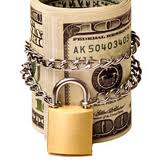 More often than not, scams and thievery can be detected and/or prevented relatively easily. Strict enforcement of all employee rules is a must and vigorous prosecution of any offenders is essential. Employees must be made clearly aware of the dire consequences of flouting the house rules - every detail must be addressed.
More often than not, scams and thievery can be detected and/or prevented relatively easily. Strict enforcement of all employee rules is a must and vigorous prosecution of any offenders is essential. Employees must be made clearly aware of the dire consequences of flouting the house rules - every detail must be addressed.
- Have a manager total the cash at the end of a bar shift. While the bartenders may feel distrusted, you can always point out that the rule is in place to protect honest staff.
- House rules. All new members of staff should be required to sign a confirmation that they have read the house rules, fully understand the implications involved and agree to follow the rules to the letter.
- No drinking on duty. Prohibit all bartenders from drinking while on duty. Also, strictly regulate off-duty drinking. Off-duty drinking can see fellow bar staff overpouring, giving away free drinks or undercharging their colleagues, and while staff should be encouraged to socialize with patrons after hours, this should be closely watched.
- Bartenders should not be involved in the
stock-taking and inventory-counting process. Nor should they be involved in receiving, ordering or issuing inventory. It might be a painful process, but this really should be a management-only function.
- High-value inventory. Strictly enforce all security procedures for liquor, wine, beer, spirits and any other high-value inventory. Only key personnel should have access to storage areas, and everything that comes out should be duly noted.
- Require bartenders to record post-shift bar-
par readings. This refers to the number of bottles left in fridges and behind the bar after a shift has ended. Engage in spot-checking of this count to ensure that no thieving is taking place.
- Prohibit the practice of recording more than one transaction per drink ticket. If your bartenders are allowed to use a "running" ticket, they can easily neglect to record all the drinks they have actually sold and pocket the difference.
- Strictly enforce voiding procedures. If an amount is rung up on the register, the bartender should not be allowed to void it without management approval.
This article is an excerpt from the Food Service Professional Guide to Bar & Beverage Operation, authored by Chris Parry, published by Atlantic Publishing Company. This excerpt has been reprinted with permission of the publisher. To purchase this book go to:
Atlantic Publishing Company
Amazon.com
Topics:
liquor inventory,
Bar inventory,
bar inventory levels,
Bar staff,
liquor theft,
Bar Management,
bar control,
inventory counting,
inventory control
 This is an alarming fact: most types of beverage operations lose a crippling percentage of profits through insider theft. The vast majority of employees in the beverage industry are honest and hardworking; it is the small minority of staff that can ruin your business through dishonesty. Insider theft can often escalate if there are weaknesses in the following general areas of the operation:
This is an alarming fact: most types of beverage operations lose a crippling percentage of profits through insider theft. The vast majority of employees in the beverage industry are honest and hardworking; it is the small minority of staff that can ruin your business through dishonesty. Insider theft can often escalate if there are weaknesses in the following general areas of the operation:
 By Elizabeth Godsmark
By Elizabeth Godsmark


 By Chris Parry
By Chris Parry
 A bar business is not, as many people think, a service industry. Of course, it's part service industry, but it's also very important not to forget that it's also an entertainment industry. Do your bartenders entertain your customers while they are serving them?
A bar business is not, as many people think, a service industry. Of course, it's part service industry, but it's also very important not to forget that it's also an entertainment industry. Do your bartenders entertain your customers while they are serving them?
 More often than not, scams and thievery can be detected and/or prevented relatively easily. Strict enforcement of all employee rules is a must and vigorous prosecution of any offenders is essential. Employees must be made clearly aware of the dire consequences of flouting the house rules - every detail must be addressed.
More often than not, scams and thievery can be detected and/or prevented relatively easily. Strict enforcement of all employee rules is a must and vigorous prosecution of any offenders is essential. Employees must be made clearly aware of the dire consequences of flouting the house rules - every detail must be addressed.
